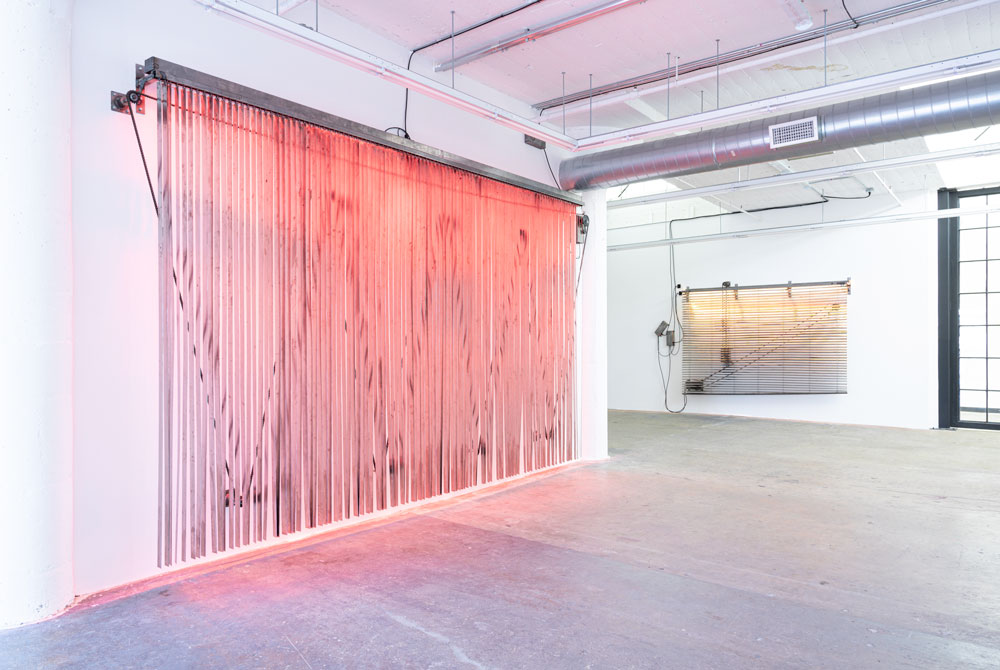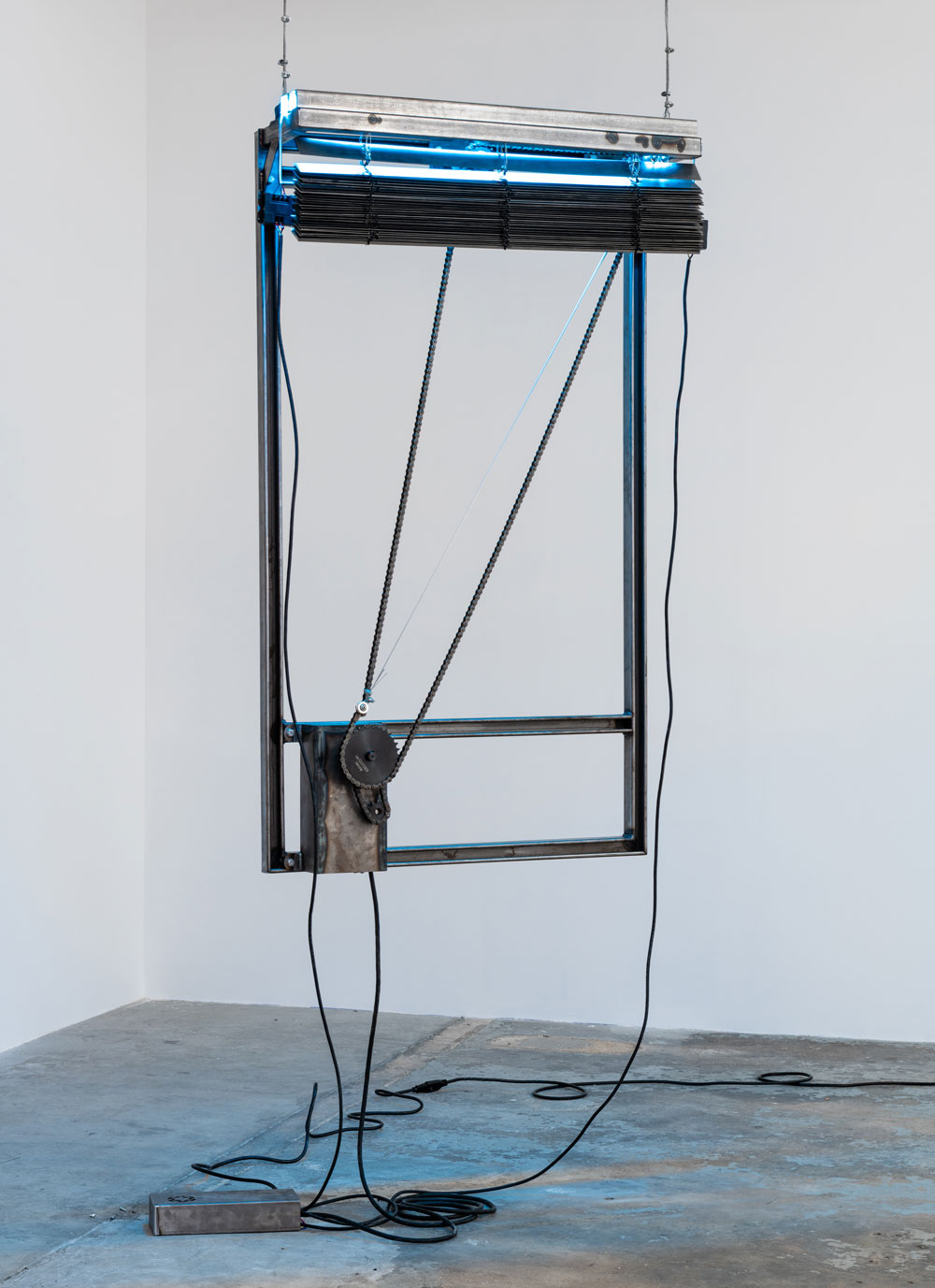Upon entering Stephen Neidich’s solo show, “five more minutes please,” everything is stock still, until the clattering begins. It immediately becomes clear that one’s movements cause the Venetian blinds—hanging from the ceiling or against the gallery walls—to raise or lower themselves. Lamps are housed in the topmost part of the sculptures and vaguely ominous carmine red or neon blue lights pour down from the upper slats of the blinds, becoming darker as they fall, reminiscent of a nocturnal interior from an old film noir. Each blind is a separate work that represents a “window,” made from a series of giant steel belts, which incorporate both slippages and errors into the process.
In a corner of the gallery, But they should never be buildings (2021) splatters acidic blue reflections up and down the moving slats with the machinery of the cranks more or less visible as it opens and closes. The oversized nature of this set of gears and motors are almost monstrous, and the coils of chain and power boxes are splayed out on the floor in disarray.

Stephen Neidich, installation view: five more minutes please, courtesy Wilding Cran Gallery, photo by Ruben Diaz.
The gallery is entirely dark except for the light coming from the (real) windows and from the moving blinds on the walls. All of the hanging sculptures appear to be moving in rotation, so that once the viewer has set off the sensor they just keep churning away. There are moments in which the individual mechanics seem to catch and the metal has to be snapped back out of its arrested position. This stuttering performance heightens the decrepit and dystopian atmosphere.
The question arises of what exactly is being evoked? More than the creation of a dysfunctional landscape, there appears to be an operatic celebration of how things actually keep going even though they don’t appear to be working much of the time. The chains, rollers and powering devices are colossal and ungainly but even with the occasional programmed glitch, the contraptions self-correct.
The gallery itself, located in a converted industrial space with an exposed ceiling fitted with tubes, cables and weathered concrete floor, provides the ideal setting for the works of Stephen Neidich.

